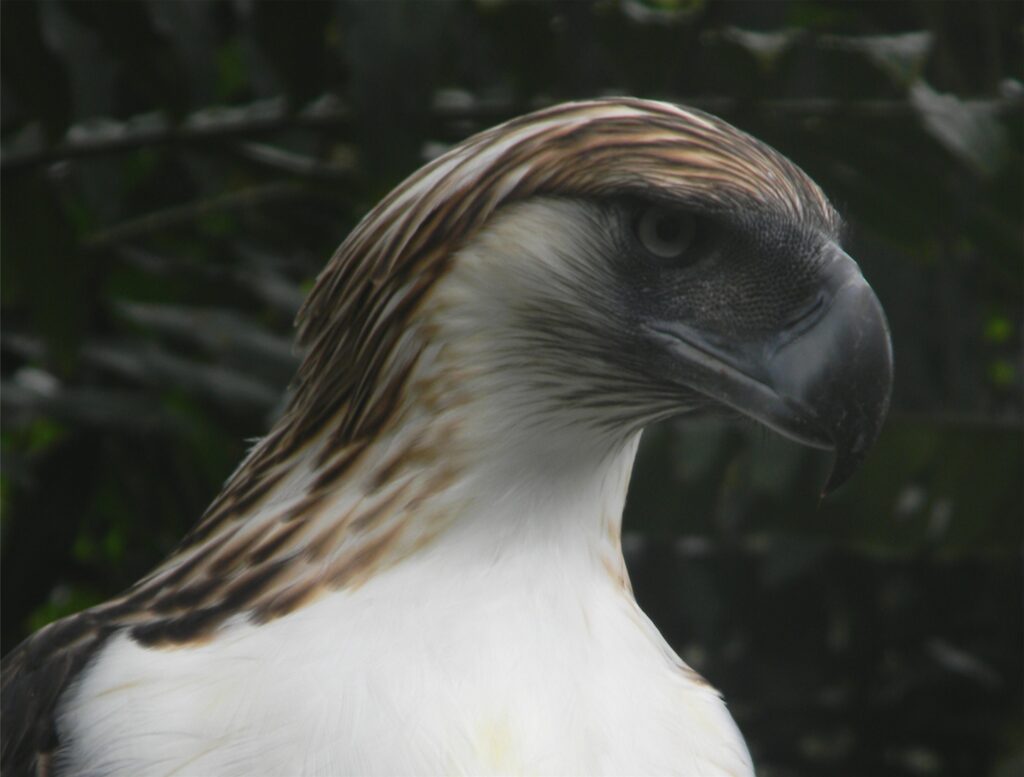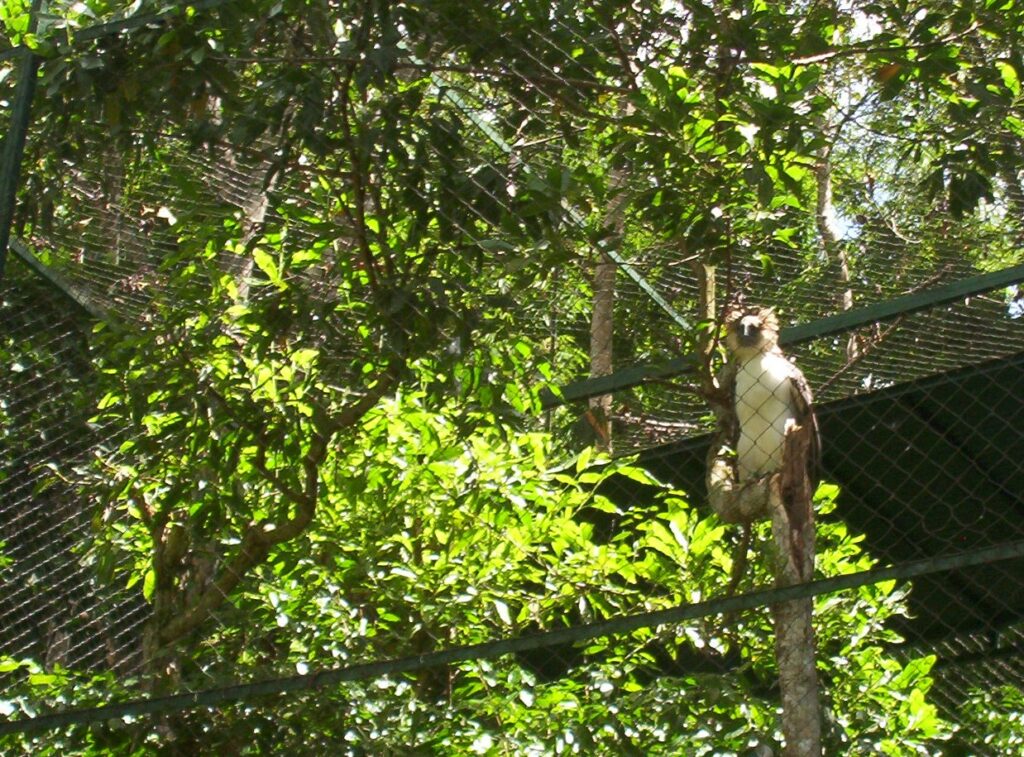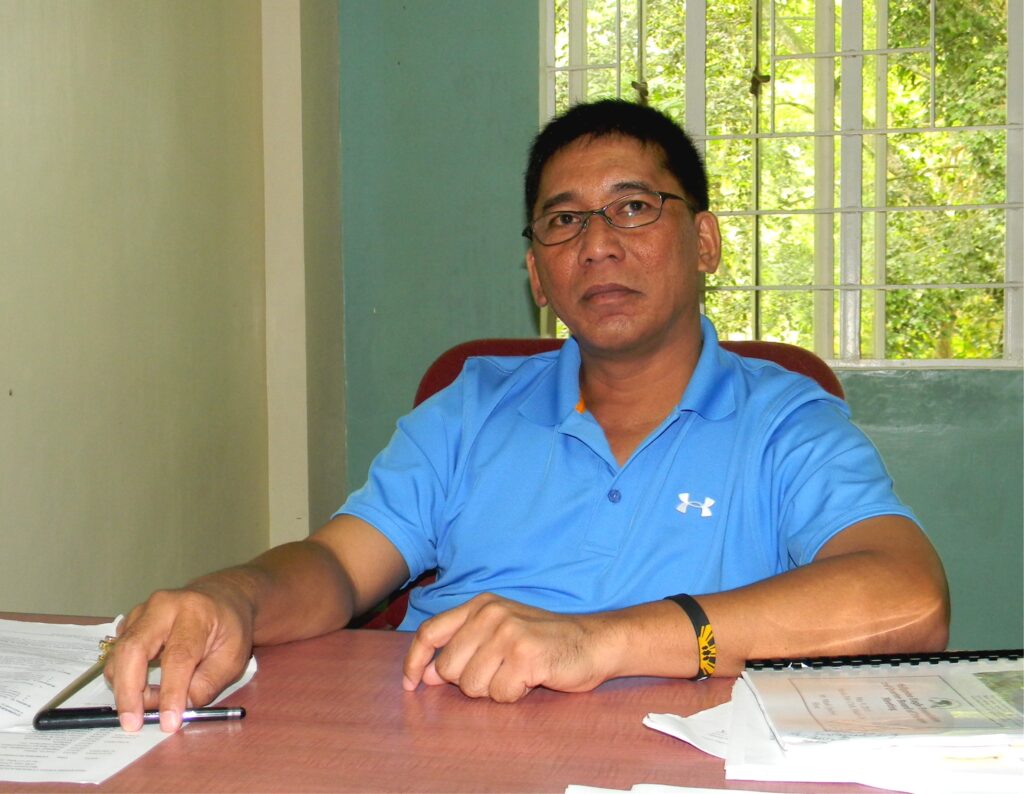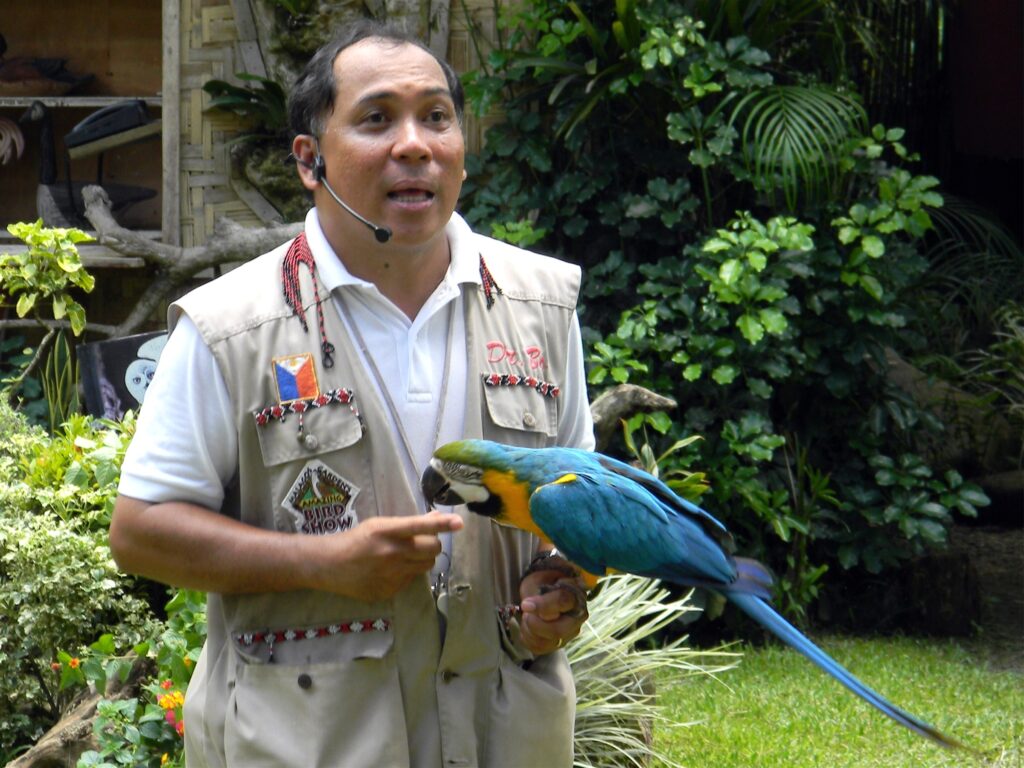Text and Photos by Henrylito D. Tacio
“We will lose our biodiversity. It will lead to extinction. When it becomes extinct, that resource will never come back.” – Dr. Angel C. Alcala
***
This happened a couple of years back: Bernie Apal and his two companions were on their way to the barangay hall of Sibulan in Santa Cruz, Davao del Sur, to get a residence certificate. They tried to follow the short-cut way instead of the usual road going to the place.
The area was covered with trees as it was located in the foothills of Mount Apo, the country’s highest peak. The three men were talking while walking when Apal saw a bird that was entangled in tree roots and was wrapped with perennial vine. Even though the bird was on a cliff, Apal decided to rescue it.
Apal, a Bagobo-Tagabawa farmer, thought the bird was dying as it was unresponsive and scrawny. The bird’s left eye was also injured as a result of trying to escape from the vine. It was assumed the bird was hunting for food when it got itself strapped in the perennial vines that grow near the roots of trees.
Apal had to walk for three hours to reach the barangay hall; he immediately turned over the bird to the authorities. The barangay captain contacted Hedcor, a wholly-owned subsidiary of Aboitiz Power which operates a run-of-river hydropower plant in the area, and asked to do something to save the bird.
Hedcor immediately brought the bird – which was identified later on as a Pinsker’s hawk-eagle – to the Malagos Garden Resort, where Dr. Roberto “Bo” Puentespina, Jr. is having a sanctuary for rescued birds.
When Dr. Bo saw the bird, he was adamant at first. The survival was slim as the bird was suffering from dehydration and starvation. “People who want to rescue birds must give them water every now and then,” he suggested.
In order for the birds not to be restless during the travel, Dr. Puentespina suggested that the eyes be covered perhaps with a clean sock. Also, the birds must be wrapped to prevent their wings from moving.
Dr. Bo nursed the hawk-eagle back to health and provided vitamins and medication. When it was brought in for treatment, the eagle’s weight was only 500 grams. A month later, it gained 300 grams more. “The only thing I did to help the eagle was to give it my tender loving care,” he said.
After 37 days of intensive care, the hawk-eagle was released in the area where it was rescued.

Philippine eagle up close 
Philippine eagle in a cage
Among the criteria identified before the hawk-eagle was released were good body condition and the ability to fly. In addition, the injured eye had already fully recovered. When all these considerations were met, the hawk-eagle soared back again to its original habitat.
“I am very happy that the bird will go back to the forest again,” said Apal, adding that other people must do the same to protect the remaining natural species which God has given to Filipinos.
Threatened birds
Birdlife International has identified 594 bird species found in the country – this makes the Philippines 58th in the world for bird species richness. A third of the bird species are endemic or can only be found in the Philippines.
Unfortunately, 93 birds (15.6%) are threatened with extinction, ranking the country 8th for globally threatened species. For endemic species, the outlook is even more dire, with 75 (29.1%) of the 258 endemic species considered threatened.
The Pinsker’s hawk-eagle is considered a threatened species, or its population has been highly depleted to the minimum, below which the species or subspecies could become extinct.
The Haribon Foundation, an environmental group, is particularly concerned about the Philippine eagle, which has seen a rapid population decline over the last 60 years.
The International Union for Conservation of Nature (IUCN) listed the Philippine Eagle (Pithecophaga jefferyi) as an endangered species, which means the bird is in “danger of extinction.”
In the Convention on International Trade of Endangered Species of Wild Fauna and Flora (CITES), the Philippine eagle is listed under Appendix I: “the trade of species or subspecies of wildlife listed in this category is strictly prohibited except for educational, scientific or search and study purposes.”
The IUCN also listed these two Philippine birds as endangered species: Blue-naped parrot (Tanygnathus lucionesis) and Rufous hornbill (Buceros hydrocorax).
Aside from Pinsker’s hawk-eagle, also listed by IUCN as threatened species are Bagobo babbler, black-faced spoonbill, Blue-breasted flycatcher, blue-capped kingfisher, Cebu black shama, celestial blue monarch, Chinese egret, grey imperial pigeon, Japanese bittern, Japanese yellow bunting, long-billed creeper, and Luzon wren-babbler.
The following are likewise threatened bird species: Mindanao parrotfinch, Mindoro bleeding heart pigeon, Negros fruit dove, Negros bleeding-heart pigeon, Negros tree babbler, Nicobar pigeon, Philippine water redstart, short-crested monarch, spot-billed Pelican, Sulu bleeding heart pigeon, Sulu hornbill, and white-throated jungle flycatcher.
In Benguet, a news report said two rare forest birds in the country’s second-highest peak, Mount Pulag, are facing extinction. These are whiskered pitta (Pitta koctri) and Luzon water-redstart (Rhyacomis bicolor).
Philippine cockatoo (Cacatua haematuropygia) is another bird that is on the verge of extinction. Most of the remaining birds of this kind can be found on Rasa, a tiny island just off Palawan, where a coal power plant is soon to be built.
A species is considered extinct when it is no longer found in the past 50 years. Endangered species are those that have been reduced in number to a critical level or whose habitats have been damaged or altered, or reduced.
Rare species have small world populations. Usually, they are restricted to very few habitats. At present, rare species are not considered but at risk. Threatened is a general term used to describe bird species that could be in the status of “endangered” and “insufficiently unknown.”

Dennis Salvador 
Dr Roberto Puentespina
Usual culprits
Environmentalists blame habitat loss as the primary factor in the decimation of the bird species in the country. The State of Philippines Birds, published by Haribon Foundation and Birdlife International, said that about 67% of the country’s birds spend their life or part of their life in a tropical forest.
“The lush forests and more than 7,000 islands of the Philippines hold a rich diversity of life, with 258 bird species who live nowhere but the Philippine archipelago,” wrote science writer Paul Gabrielsen of the University of Utah Communications.
Citing a study published in Frontiers in Ecology and Evolution, he said that due to deforestation and habitat degradation, “more bird species may be endangered than previously thought.”
In Cebu, which has about two percent forest cover (recent reports said it has now about 11 forest cover), one species and several subspecies have joined the dodo into extinction.
The status of the endangered Philippine eagle is another case in point. It lives in dipterocarp and mild montane forests, particularly in steep areas. Studies have shown that a pair of Philippine eagles needs at least 7,000 to 13,000 hectares of forest as a nesting territory.
“The forest is its only habitat,” points out Dennis I. Salvador, executive director of the Philippine Eagle Foundation. “Without the forest, the species cannot survive over the long term.”
Hunting has also contributed to the decimation of several bird species. Many birds are consistently caught for meat. A few years ago, there was a news report of seven men who were illegally hunting wild Philippine ducks inside a protected area in Pantabangan town in Nueva Ecija.
Birds are also threatened with climate change. “Increased temperatures may render habitats unsuitable thus effectively reducing areas for restricted-range birds,” Birdlife International explains.
“Species will move to higher elevations to look for a suitable habitat when it gets hotter in the lowlands,” Birdlife International says. “Species move at different speeds and rates, which may cause an imbalance in the ecosystem because predator and prey will not be able to move to the new habitat at the same time.”
Facing doom
“Diversity of birds in the Philippines is among the highest in the world,” said Dr. Theresa Mundita S. Lim when she was still the director of the Biodiversity Management Bureau (BMB) of the Department of Environment and Natural Resources (DENR).
But most of the birds are facing extinction. “The Philippines is in terrible shape environmentally using the bird as an indicator of the health of its natural ecosystems,” observed Prof. Blas R. Tabaranza, Jr., former Habiron executive director.
Dr. Lim agreed. “Our feathered Philippine icons play important roles in balancing the ecosystem,” she said. “They serve as predators and seed disperses, greatly contributing to the regeneration of natural forests, which ensures continuous supply of basic ecosystem services, such as clean air and water.”
But birds have other uses, too. “Birds can also present a primary focus for economic development through international tourism,” Dr. Lim said. “They hold the potential for huge international visitation rates through the global birding community.”
New bird species
The good news is: new bird species are continuously being discovered. “In the past 12 years, there have been several new records of birds in the Philippines,” Birdlife International reports. “These records increased the total count of Philippine birds from 572 (in 2000) to 604 (in 2012).”

